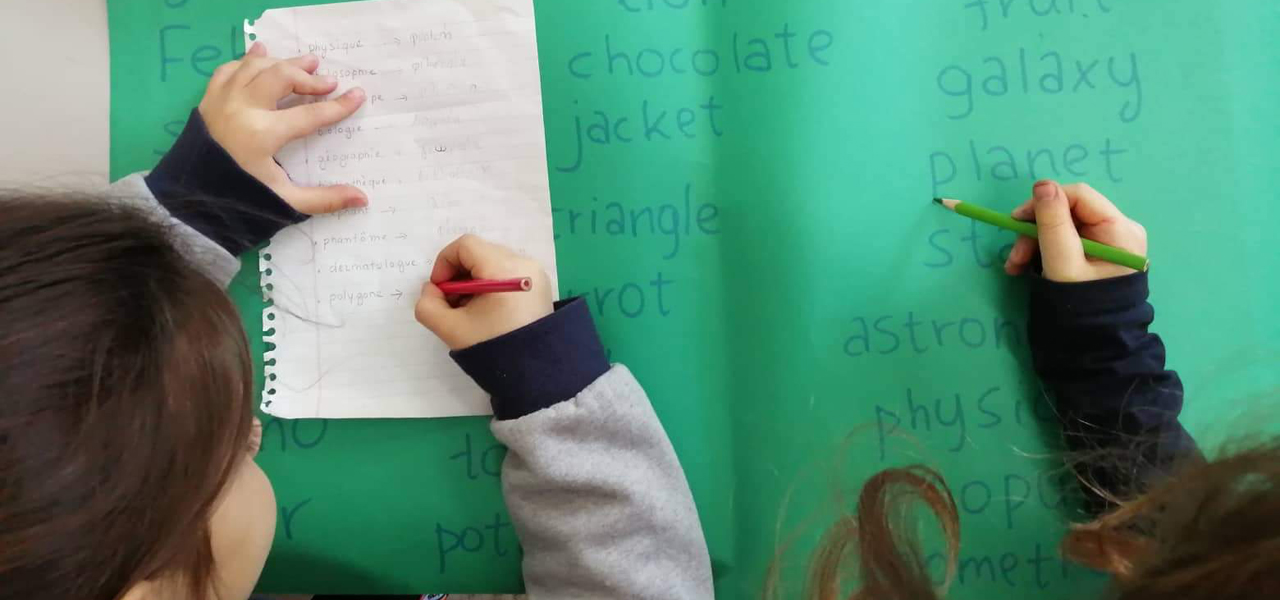
Along with Greek, English is considered a principal language of instruction at our school. Our goal is for our students to develop critical thinking and communication and research skills in English, as well as to learn about the culture, customs and attitudes of English-speaking peoples in depth. Language teaching is conducted through the curriculum as defined by the PYP and MYP of the IB, during which students study and collect information from various sources and discuss and present the findings of their research in the class using the language in its natural environment (inquiry-based learning).
CGS Kindergarten
Nursery School/Kindergarten (ages 3 to 6)
The daily core programme includes activities in both Greek and English (Dual Language Programme). Through specially tailored activities which include stories, games and songs, children explore, experiment and learn to express themselves in English in mixed classes in a pleasant and creative way.
CGS Primary
Primary School- IB PYP (ages 6 to 12)
In the Primary School – IB PYP, we continue to place emphasis on the spoken form and enrich it based on prior knowledge while at the same time the students begin to master written discourse.
PYP Year 1
In PYP Year 1, students take their first steps in reading and writing by learning the letters of the English alphabet, writing their first words and sentences while maintaining a high level of spoken English which they have gained by attending our Nursery School.
From PYP Year 1 the approach to learning is different for students whose English is at a particularly high level (native speakers of English, children who have attended foreign schools or children who are particularly gifted in English) and who meet specific criteria. These students attend special ENL (English as a Native Language) sections.
PYP Year 2
In PYP Year 2, the students are placed in homogenous groups, with a dynamic that promotes their positive development in individual skills while having common learning goals. This is where the first cycle in English is completed; students are familiar with the basic structure and vocabulary of the language and are equipped to continue to expand their knowledge.
PYP Years 3 to 6
In PYP Year 3, the second cycle of studies begins and ends in PYP Year 6. Students are divided into sections according to their prior knowledge, their competence and their performance in the language, factors that determine their learning rate and placement in the corresponding PYP stages in the Primary School.
The table below shows the PYP stages for English (Table 1). The learning objectives of the last stages of IB PYP overlap with the first phases of IB MYP.
| PRE-PRE-N | PRE-N | Ν | PYP Year 1 | PYP Year 2 | PYP Year 3 | PYP Year 4 | PYP Year 5 | PYP Year 6 |
|
|
|
|
EN Gr.1 |
EN Gr.2 |
EN Gr.3 |
EN Gr.4 |
EN Gr.5 |
EN Gr.6 |
| Stage 4 | Stage 5 | Stage 6 |
(MYP phase 1) |
(MYP phase 1-2) |
(MYP phase 2) |
|||
|
(MYP phase 1) |
(MYP phase 1 – 2) |
|||||||
| Stage 6 | Stage 6 – Stage 7 |
(MYP phase 1) |
| 1st CYCLE ( PYP ) | 2nd CYCLE ( PYP ) |
| ( TABLE 1 ) | |
According to the programme, students who follow the green zone will be Proficient Users of the language at the end of the third cycle of study (Table 2), students who follow the purple zone will be Independent Users whereas students who follow the orange zone will be Capable Users.
|
MYP Year 2 |
MYP Year 3 |
MYP Year 4 |
MYP Year 5 |
| Phase 3 | Phase 4 | Phase 5 | Phase 6 |
| Phase 2 – Phase 3 | Phase 3 – Phase 4 | Phase 4 – Phase 5 | Phase 5 |
| Phase 2 | Phase 3 | Phase 3 – Phase 4 | Phase 4 |
| 3rd CYCLE ( MYP ) |
|
( TABLE 2 ) |
The goals at each stage relate to Speaking – Listening – Reading – Writing skills and follow international and modern foreign language learning trends, serving the needs of students as global citizens. The teaching tools used are selected in accordance with the objectives of each stage / phase and the learning profile of the students who belong to it. The implementation of the selected methods is based on international publications, multi-modal aids, literary books, research and presentation opportunities as well as educational material tailored to the needs of each stage / phase.
The rates of learning and the consolidation of material are controlled for each class through a variety of assimilation strategies and tools during the academic year, according to the PYP Assessment Policy. At the end of each academic year, there is the possibility of a reshuffling of the homogeneous groups based on new data and the individual progress of each student. As the individual needs of each student are recognised, there may be a change of group during the academic year if necessary.



